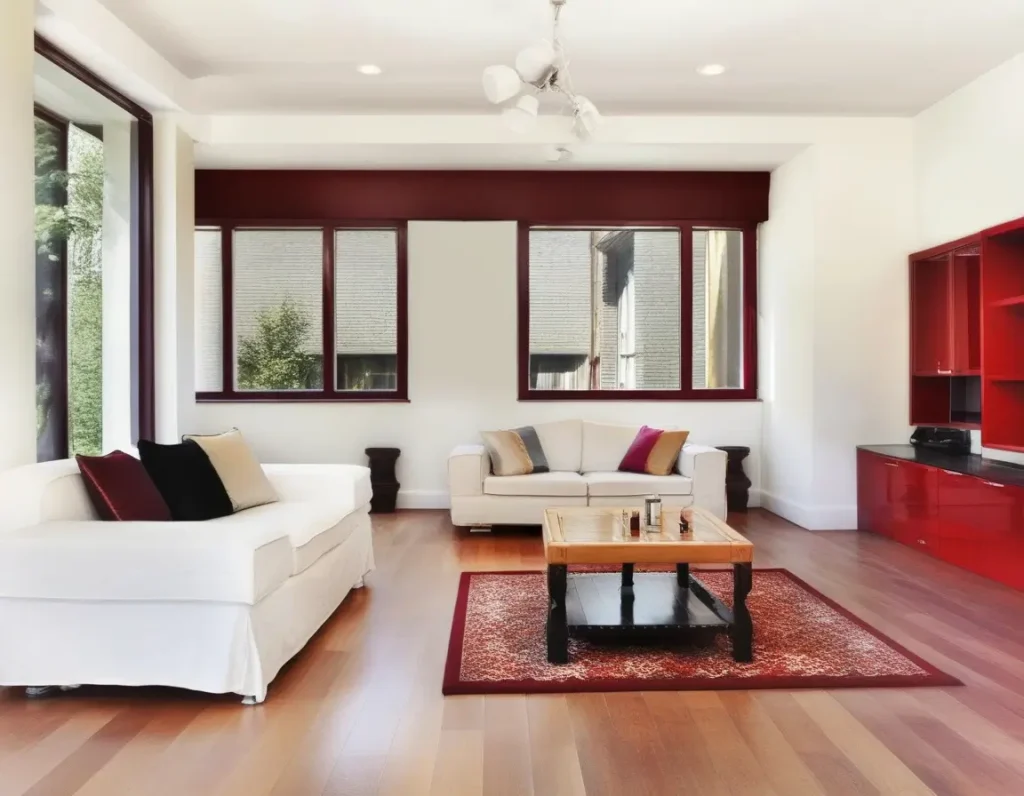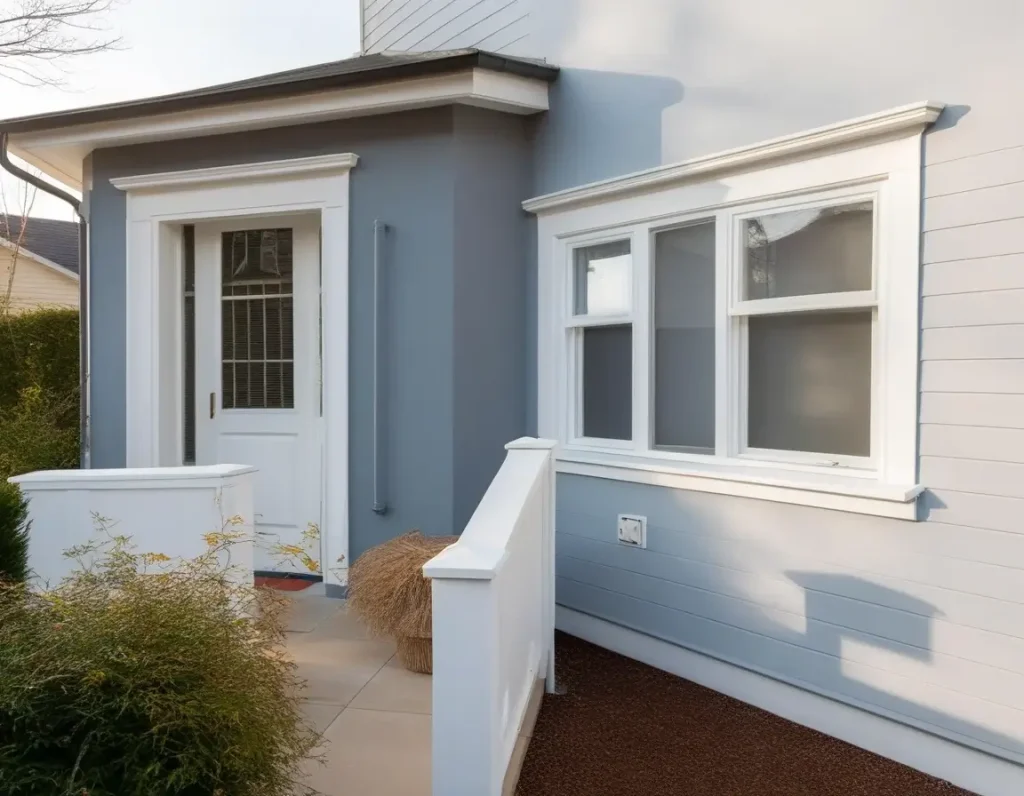Table of Contents
Getting your house painted is an evolving experience as it brings a fresh flow of energy into your living spaces. Essentially, it’s bigger than just choosing a random colour from a showcase. Regardless of whether it is interior painting to spruce up your bedroom or exterior painting to boost curb appeal, there are essential factors to consider so that your home painting project is a success. Let’s dive into these key elements, from prepping your house for paint to selecting the perfect colour combination ideas and understanding the impact on your budget.
Prepare Your House for Painting
A house needs some preparation for painting before you open the paint can.
Tips for Preparing Your House for Painting:
- Clean surfaces: The dust, dirt, and grease that are the cause of rough application in the surfaces must be cleaned.
- Repair damages: Areas which are full of holes and cracks must be filled, including peeling, because it can ruin the appearance of the paint finish.
- Prime the surfaces: For newly or repaired walls, the ideal application would be the application of a primer to ensure a very uniform appearance.
- Taking that extra time to prepare the house for painting will prevent future peeling and uneven finishes, while your paint job looks professional and lasts longer.
Choose a Suitable Colour Scheme
Choosing the right colour is the most exciting part of home wall painting. Modern wall painting ideas for the living room or soothing bedroom painting ideas come out at play here. Everything depends on achieving the perfect colour scheme, which is the key to capturing the intended ambience. This is where a shade card and, for example, a colour visualiser tool prove helpful.
A shade card allows you to view several colours at once, therefore the colours you like and dislike can be viewed collectively. A colour visualiser tool allows you to test many combinations of colours on the walls of your house before finalising a choice. Both of these are really useful tools when narrowing down and visualising your colour combination ideas.
For example:
For common spaces like the living room and dining area, beiges, soft greys, and whites do the trick to mould a serene and classy atmosphere.
Accent walls can be done in bold colours like navy blue, emerald green, or mustard yellow to make them stand out, thus making particular rooms unique.
Consider Interior vs. Exterior Painting
When choosing which part of the house to paint, you should keep in mind that interior and exterior painting are two distinct and different procedures from each other. They come with a host of problems and need different paints and techniques to be applied for optimal results.
Interior Painting

The goal here is to create a cohesive and inviting space. Think of the bedroom, living room, and kitchen. You will require paints that come out easy to clean. According to the type of the room, you could use matte, semi-gloss, or satin finishes. Matte would be ideal in hiding imperfections areas with low traffic; the semi-gloss can be applied in kitchens and bathrooms since it resists the moisture.
Exterior Painting

It should be weather-resistant and durable. The exterior is exposed to harsh sunlight, rain, and changes in temperature. Therefore, it is best to use high-quality weatherproof paints as a protective covering for your home’s exterior for many years. Lastly, the exterior colours should harmonise with the environment but make it stylish at the same time.
Cost of Painting
Budgeting for your painting project is a big necessity. A good painting cost calculator makes an excellent estimation of the total cost. AapkaPainter’s painting cost calculator can help you get an estimate based on your house type, area, painting services and more. Add the relevant details and get an idea of how much it is going to cost you.
Selecting the Right Paint Finish
The finish you use determines the final view and feel of your paint job. There are specific rooms in a house that are best suited for particular finishes, depending on their work and aesthetic goals.
- Matte: The best for low-traffic areas, like bedrooms or even living rooms. It provides a smooth, non-reflective finish, great to hide out the imperfections on the wall.
- Eggshell: Suitable for light foot traffic, such as hallways. It has a gentle sheen and is relatively easy to clean.
- Semi-gloss: Kitchen and bathroom surfaces and trim work are well fitted for this finish because it is resistant to moisture and can be easily wiped clean.
- Gloss: This is mainly used in woodwork, doors, and cabinets in order to achieve a shiny and resistant finish requiring little care.
Climate and Environment
As far as home painting is concerned, the next important consideration is the climate. Houses placed in humid or rainy areas require paints that are moisture resistant. On the other hand, homes located in extremely sunny, dry areas require paints that resist UV & fade-resistant paints.
Professional vs. DIY Painting
The final decision to consider is whether you paint yourself or hire professional painters. Painting might be an activity to be taken up for fun, but the process takes a lot of patience and precision with the right tools. You are always assured of quality output with minimal efforts on your part when you choose professional painters. They come with expertise, can give you house painting preparation advice, and have high-end equipment to give that perfect finish.
Identify a Colour Theme for Different Rooms
A well-planned home painting project should give a different feel to each room. For instance, for house painting ideas for the bedrooms, a soothing colour is usually what people need for quality sleep. So, it can be pastel blue, lavender, or light green. You can make your living rooms and dining areas lively and strong-coloured with shades of yellow, ochre, or coral.
Conclusion
Painting a house is surely one of the major changes you can bring in your house, though it has to be well planned. Everything, starting from right colours by using a shade card and colour visualiser tool, to getting your place prepped, has its importance in the eventual end. Whether you’re going for interior painting or exterior painting to add a dash of vibrancy to enhance curb appeal, these considerations will guarantee that your house painting runs with complete ease and ends with success.
